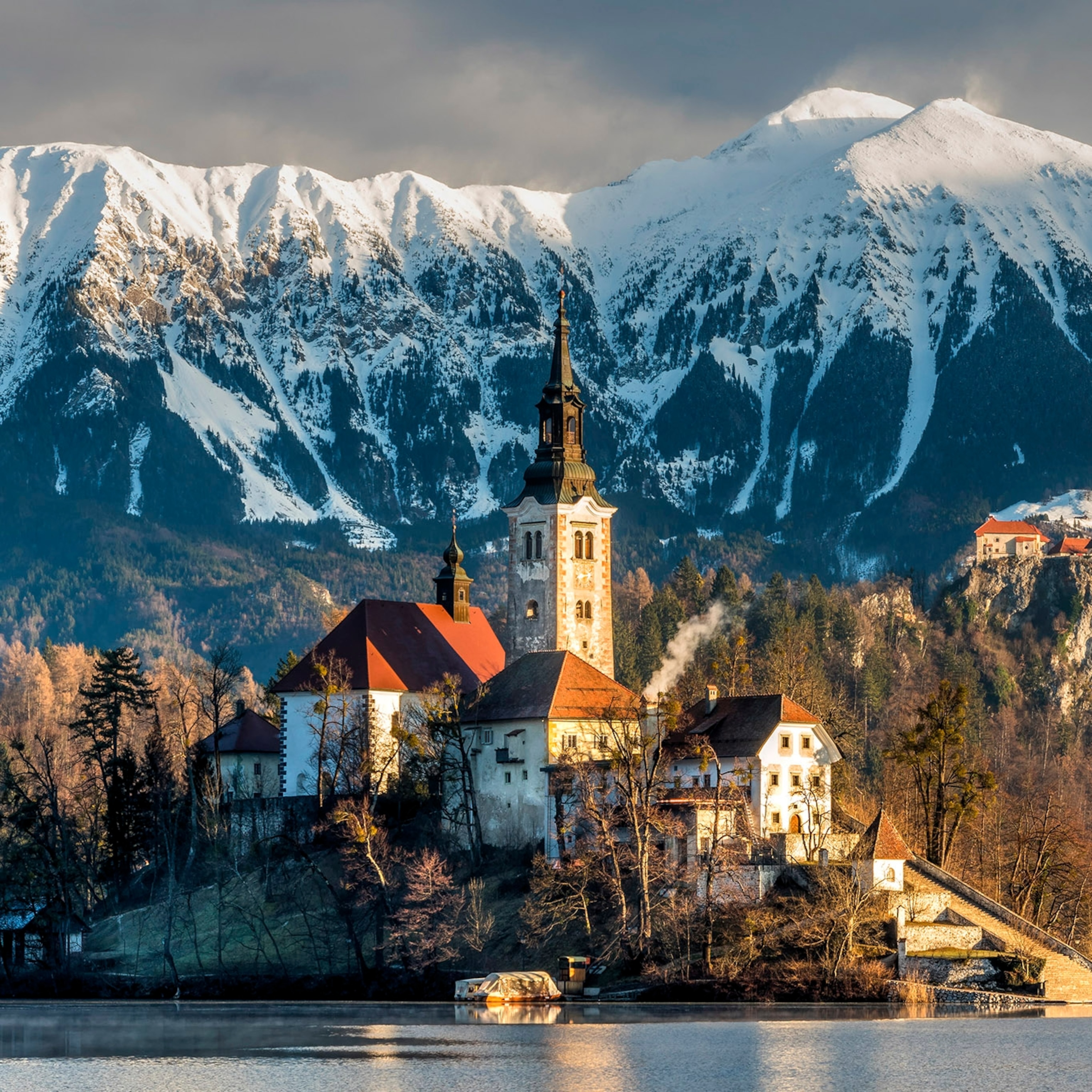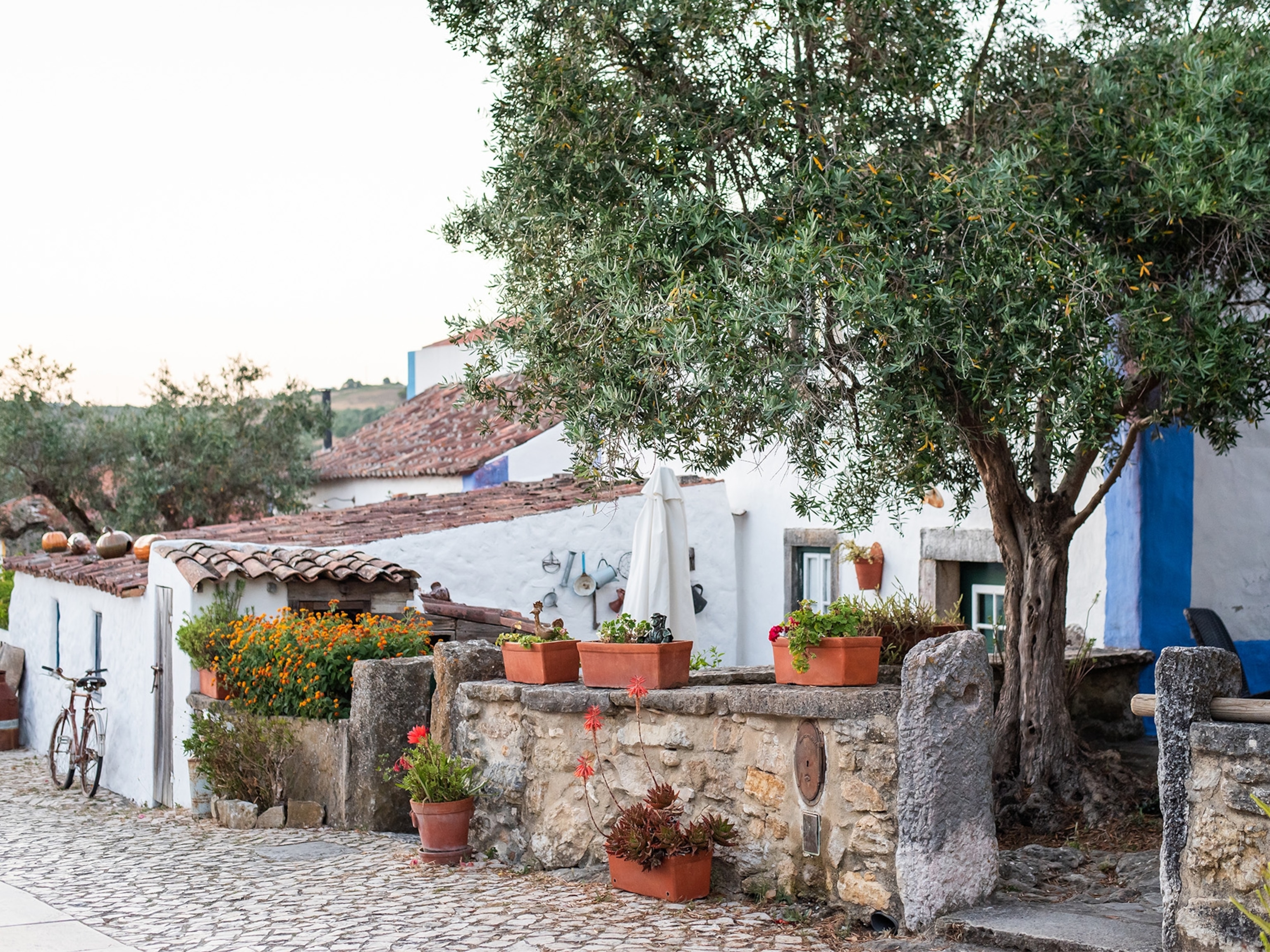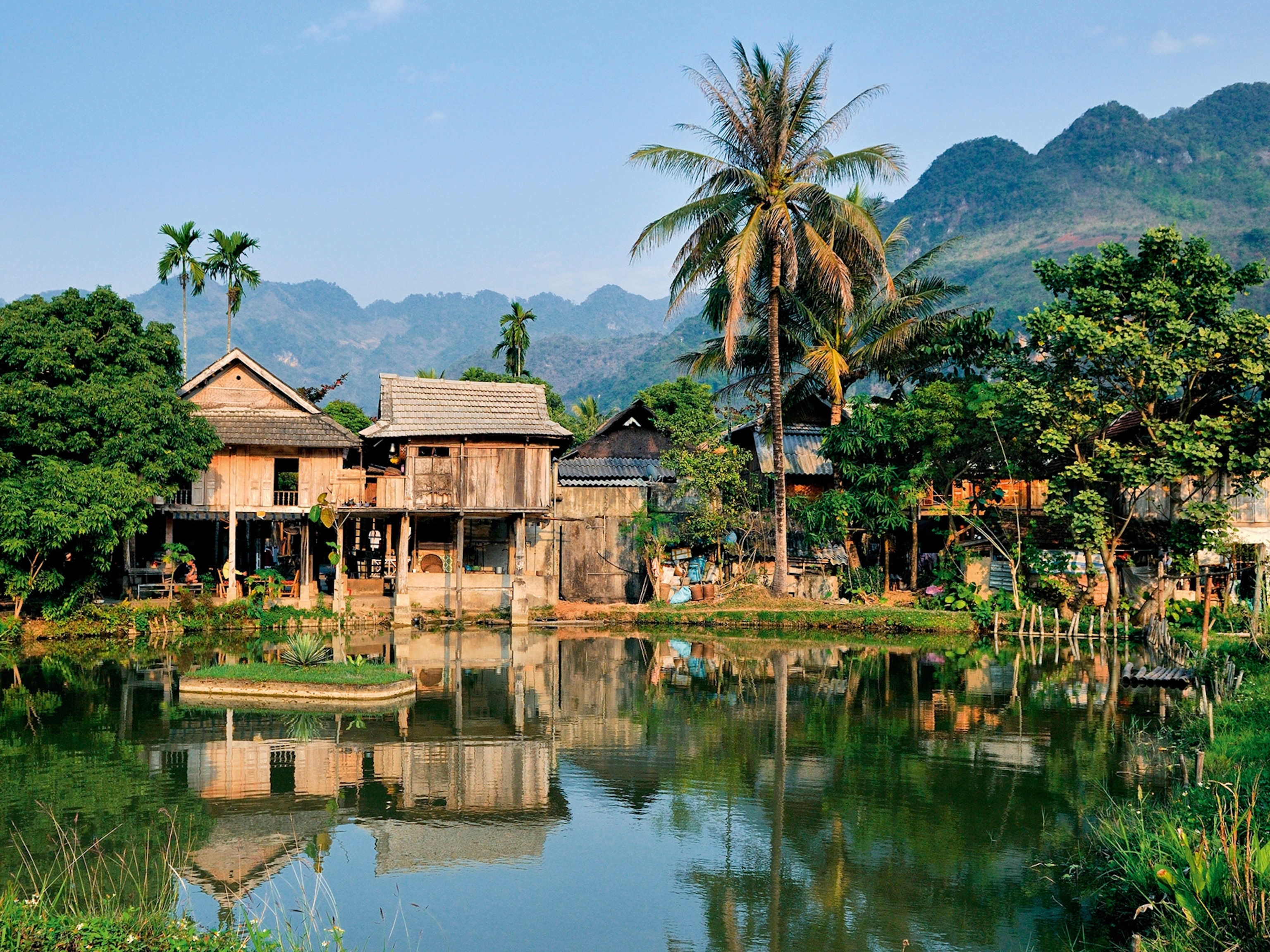
A guide to Hanoi, Vietnam's beguiling capital
With atmospheric night markets, historic temples, sleek cocktail bars and an evolving culinary scene, Vietnam’s beguiling capital offers the perfect marriage of tradition and modernity.
It’s 8am and I’m wandering the streets of Hanoi’s Old Quarter. A dawn deluge has rinsed the roads clean, and already they’re a hive of activity. Roadside stalls are setting up with the sun, while commuters crisscross the city, weaving around each other in an intricate waltz of wheels. The air is warm and soupy, thick with the smell of sizzling meat and flowers fresh from the market.
Above me, houses rise haphazardly. The history of the country is etched in their walls, the faded shutters and neoclassical balconies remnants of colonial rule. Between the mid-1800s and 1954, Vietnam was subjected to French control, though Hanoi’s newer buildings tell a more harrowing tale, constructed in the wake of the Vietnam War which, from 1955-75, saw thousands of bombs devastate the city.
Surprisingly absent in this architectural timeline are modern shopping centres or Western restaurants. Instead, street vendors and pop-up kitchens feed the population. I pass schoolgirls wearing conical non-la hats buying sweet, sticky rice from rickety wooden carts. At a hole-in-the-wall eatery, I opt for a cha lua (boiled pork not too dissimilar to a Peperami, wrapped in a banana leaf) and munch in companionable silence among a gaggle of elderly gentlemen who are clearly regular patrons.
But as my time in Vietnam’s capital goes on, subtle flashes of modernity make appearances. I wander into Gom Chi, a father-and-son ceramic shop, and spend an hour admiring funky, asymmetrical vases, before wistfully fingering the rows of pricey linen dresses from local designer Vi Thi Thu Trang at Indiehand. That evening, surrounded by smart professionals and minimalist artwork, I sit down to a tasting menu of astonishing variety at T.U.N.G Dining, which opened in 2018.
The chef’s take on pho marries lightly seared beef from Kagoshima with a silky jelly in the place of broth; it melts on my tongue and carries a subtle hint of thyme. In the panna cotta, I can taste the nation’s penchant for condensed milk (you’ll find it in everything, from coffee to cake), though the flavour is understated, combined beautifully with sesame and vanilla. “We love tradition here,” my waiter explains, noticing my rapture, “and food is part of our soul, but there’s always room to mix things up.”
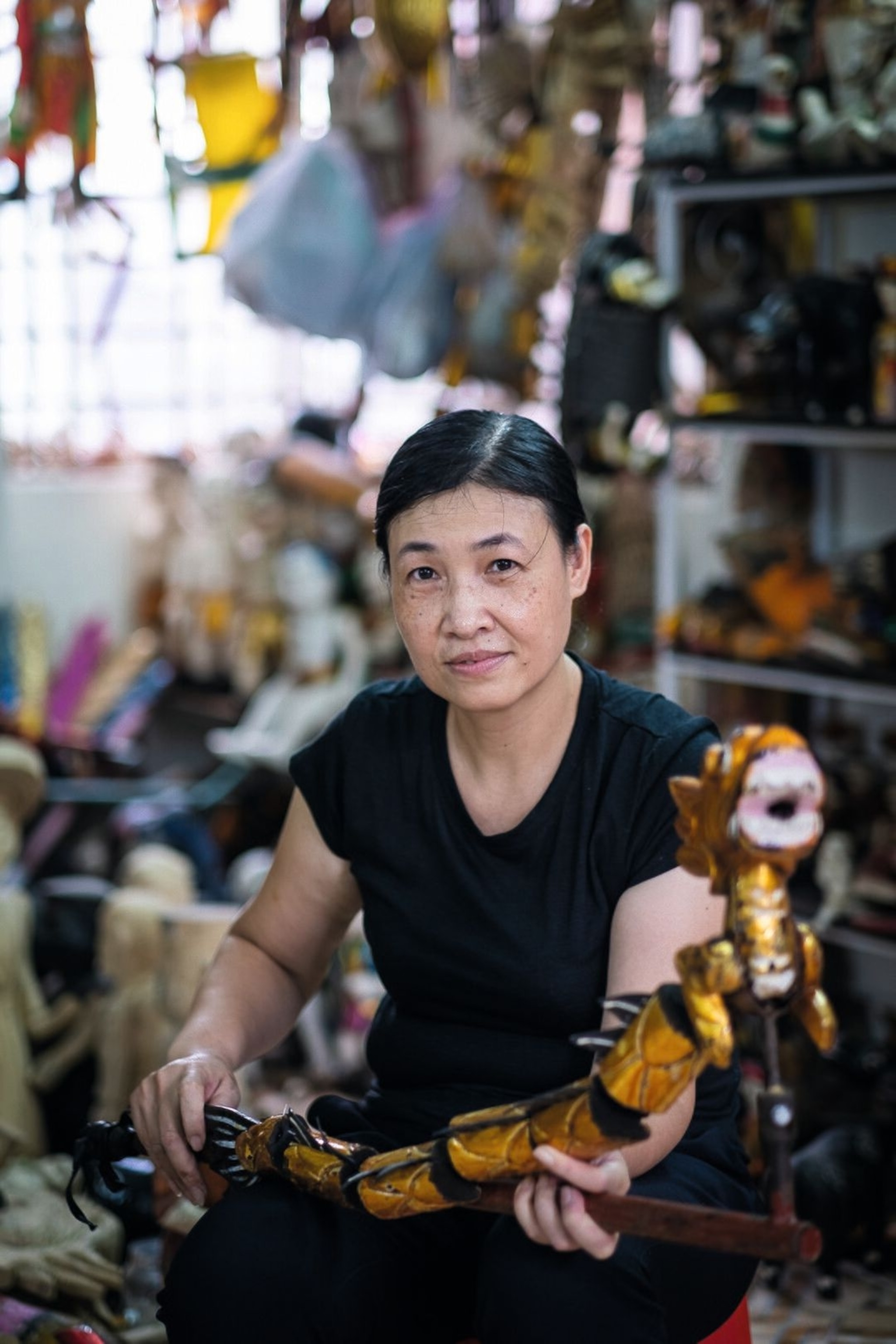
See & do
Water puppet shows: For over a thousand years, villages in northern Vietnam have been staging distinctive shows in which puppet masters tell stories with lacquered wooden dolls on a stage half-submerged in water. Choose Thang Long Water Puppet Theatre for a musical Friday evening show, or visit the workshop-cum-theatre of puppeteer Phan Thanh Liem, who descends from a long line of puppet masters.
Ho Chi Minh Mausoleum: There are few national figures more important than 20th-century Vietnamese leader Ho Chi Minh, known to the locals as Uncle Ho. The revolutionary statesman’s embalmed body lies within a monumental marble mausoleum surrounded by soldiers in white uniforms. Go early to avoid long queues and employ a local guide to bring his story to life.
Train Street: A narrow lane, built up on both sides with a railway track running through the middle, Train Street is a charming and chaotic example of urban planning in Hanoi’s Old Quarter. Grab a pew in one of the many cocktail bars and wait for a hulking locomotive to screech past not two feet from where you’re sitting. Don’t trust timetables or rumours among tourists — just arrive early in the evening and be prepared to wait.
Long Bien Market: Wander among stacks of fruit and vegetables piled up to six feet high at the city’s main produce market, a kaleidoscope of colours, sounds and smells. Having explored the seafood and flower sections, walk the length of adjacent Long Bien Bridge. This huge metal structure, designed by Gustave Eiffel, crosses the Red River and was built in 1889 during French occupation.
Temple of Literature: If you only have time for one temple, make it this. Built in the 11th century, it housed Vietnam’s first university and today students flock here to be pictured in their graduation gowns. The two-acre site is home to gardens, courtyards and central red pagoda.
Hoa Lo Prison: At the height of French rule in the early 20th century, more than 3,600 prisoners were crammed into Hoa Lo Prison, a complex built in 1896 to hold around 450. The harrowing conditions are documented on English-language signs, as is the building’s use during the Vietnam War, when it housed US prisoners of war.
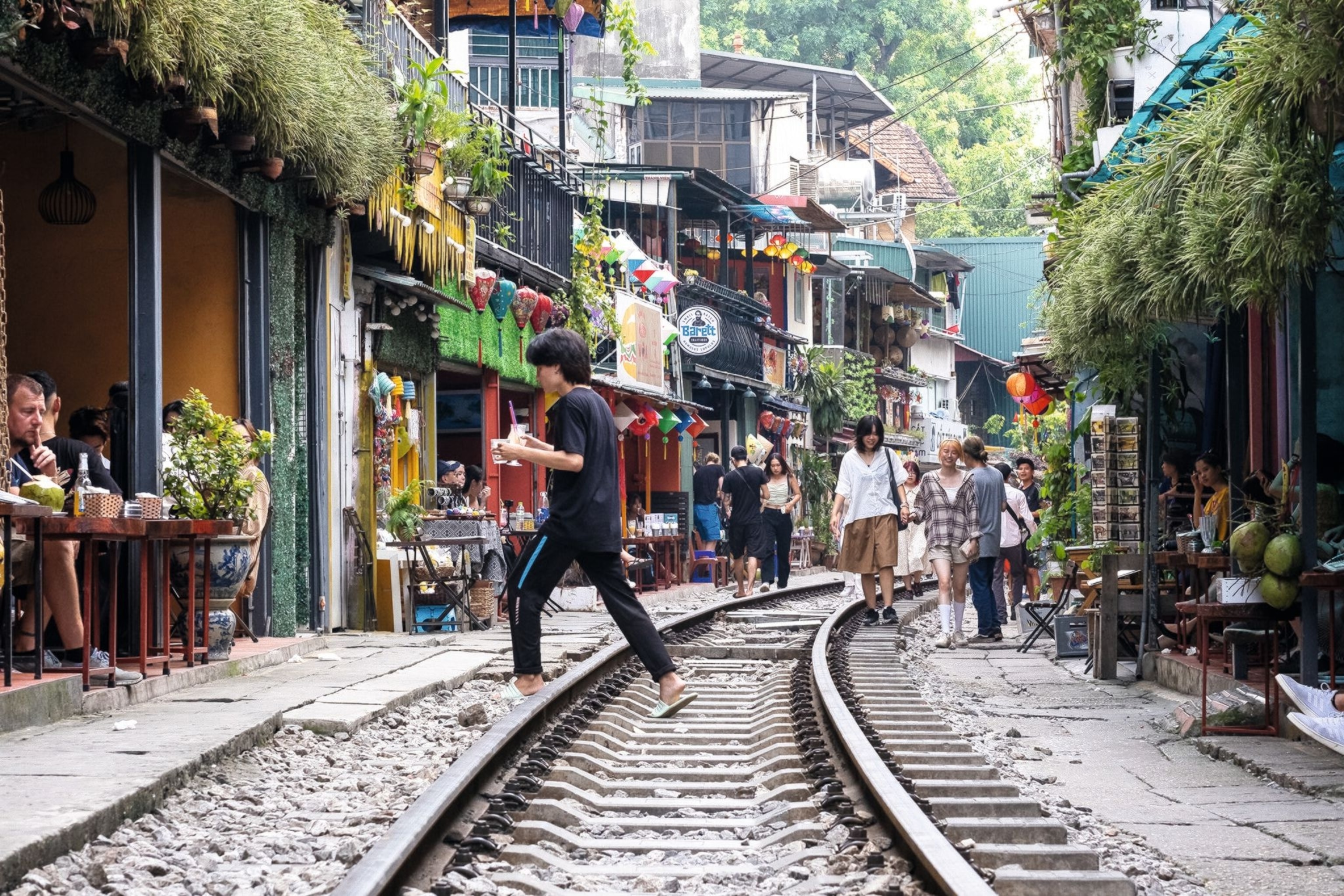
Buy
Gom Chi Ceramics: From stoneware crockery to elegant vases, each improvised, hand-thrown piece in this shop-studio is unique and informed by the owner’s lineage, which can be traced back a century to rural ceramists in the city’s southeast outskirts. Nearby is Hanoi’s so-called ‘Ceramic Road’, home to a four-mile mosaic depicting Vietnam’s history.
Dong Phong Art Gallery: Almost every inch of this cavernous gallery displays lacquerware, an ancient Chinese art form that flourished in Vietnam over the past century. Resin from lacquer trees is used to coat items like wooden chests and serving trays, before being painted and inlaid with fragments of mother of pearl.
Weekend Night Market: This lively market starts from Hang Dao Street and runs north to the edge of Dong Xuan Market. Roads close at sunset on Friday for vendors to set up their stalls. Expect children running riot with candy floss, parents sipping beers on benches and elderly couples salsa dancing in the street. There are plenty of souvenirs to be found, too, from jewellery and lanterns to silk scarves.

Eat
Pho Cuon: Locals rhapsodise about Pho Cuon, so be sure to arrive with a healthy appetite and start with the dish that gives this low-key restaurant its name. Similar to a summer roll, pho cuon is made up of beef, coriander and cucumber wrapped in rice paper and dunked in nuoccham (fish sauce with papaya, garlic and chilli).
Xofa Cafe & Bistro: This hipster cafe has the best cheesecake in Hanoi, served in a plant-filled courtyard or inside on dark-wood tables amid a maze of stylish armchairs inside. Try the coffee flavour, accompanied by a salted chocolate foam, and chase it down with a rich, creamy Vietnamese coffee made with condensed milk.
T.U.N.G Dining: Head chef Hoang curates ornate and playful dishes at T.U.N.G, a Vietnamese-European fusion restaurant in the heart of Hanoi. Opt for the 18-course tasting menu; at £75 it’s good value and every bite is a work of art, from toothfish on a bed of seaweed to crisp, deep-fried pho noodles. The minimalist interior contrasts with the expressive cooking and cocktails — just be sure to book ahead.
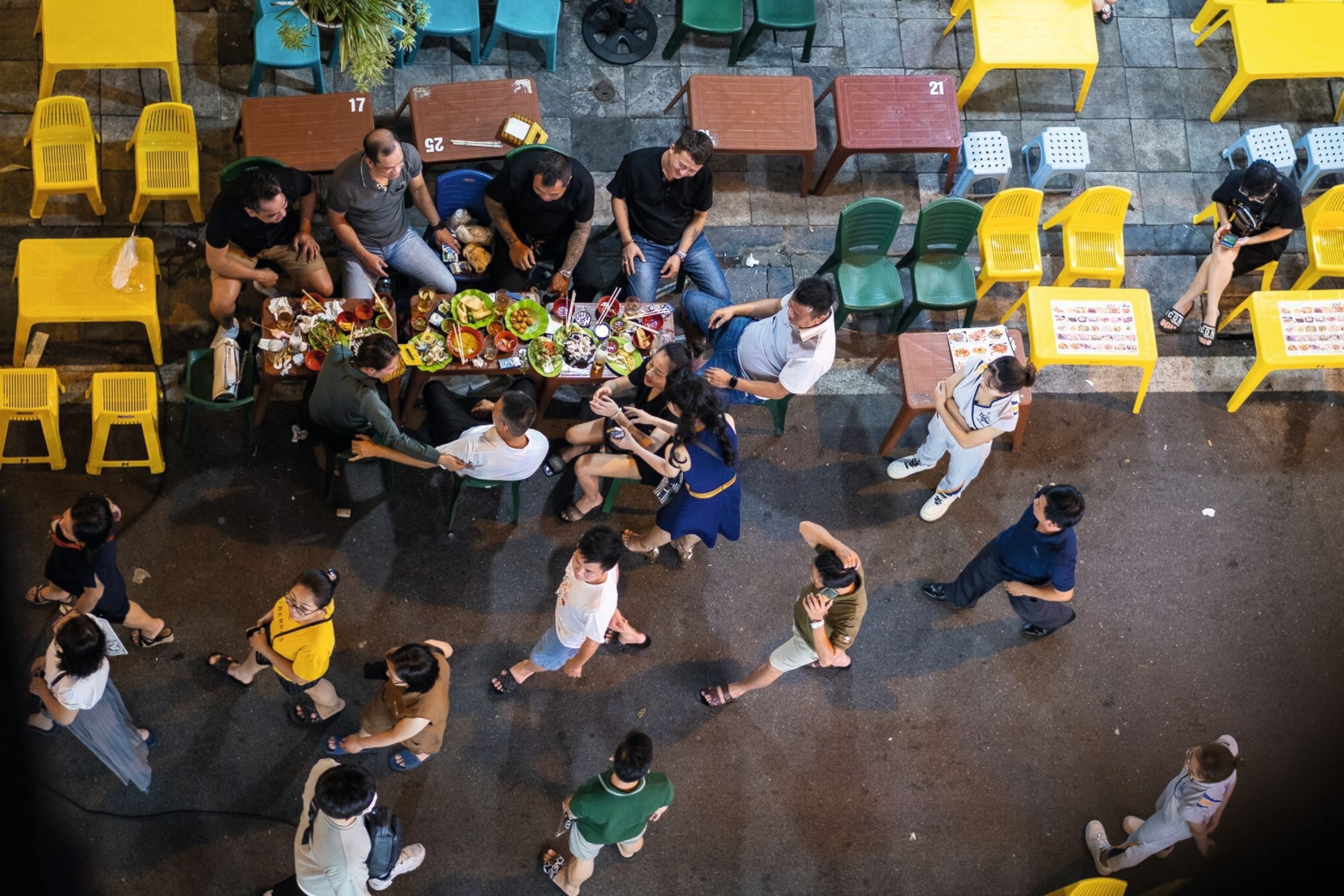
After hours
Beer Street: A night out in Hanoi has to begin on Beer Street, a road lined with pop-up bars and plastic chairs. The music is loud, the atmosphere boisterous and a pint will cost you little more than 25p, so line your stomach with some nem ran (spring rolls) from the nearby street food stalls. For a bird’s-eye view of the revelry, head to Northern Soul, a three-floor bar with a sprawling roof terrace.
The Black Sheep: Decked out in black and bronze, the Black Sheep is a classy cocktail establishment that prides itself on performative mixology. Dim lighting, hidden corners and an extensive menu make it a popular date destination. On balmy evenings, take a seat in the garden out front — strung with yellow lanterns, it’s a great place to watch the world go by.
1900 Club: This nightclub in the Old Quarter doesn’t close its doors until 7am. Expect an excellent (if slightly deafening) mix of electronic music and scantily clad performers executing dance routines on stage. An entry ticket includes a beer, and should you need a break, there are sofas on the second floor, as well as hookah pipes for hire.
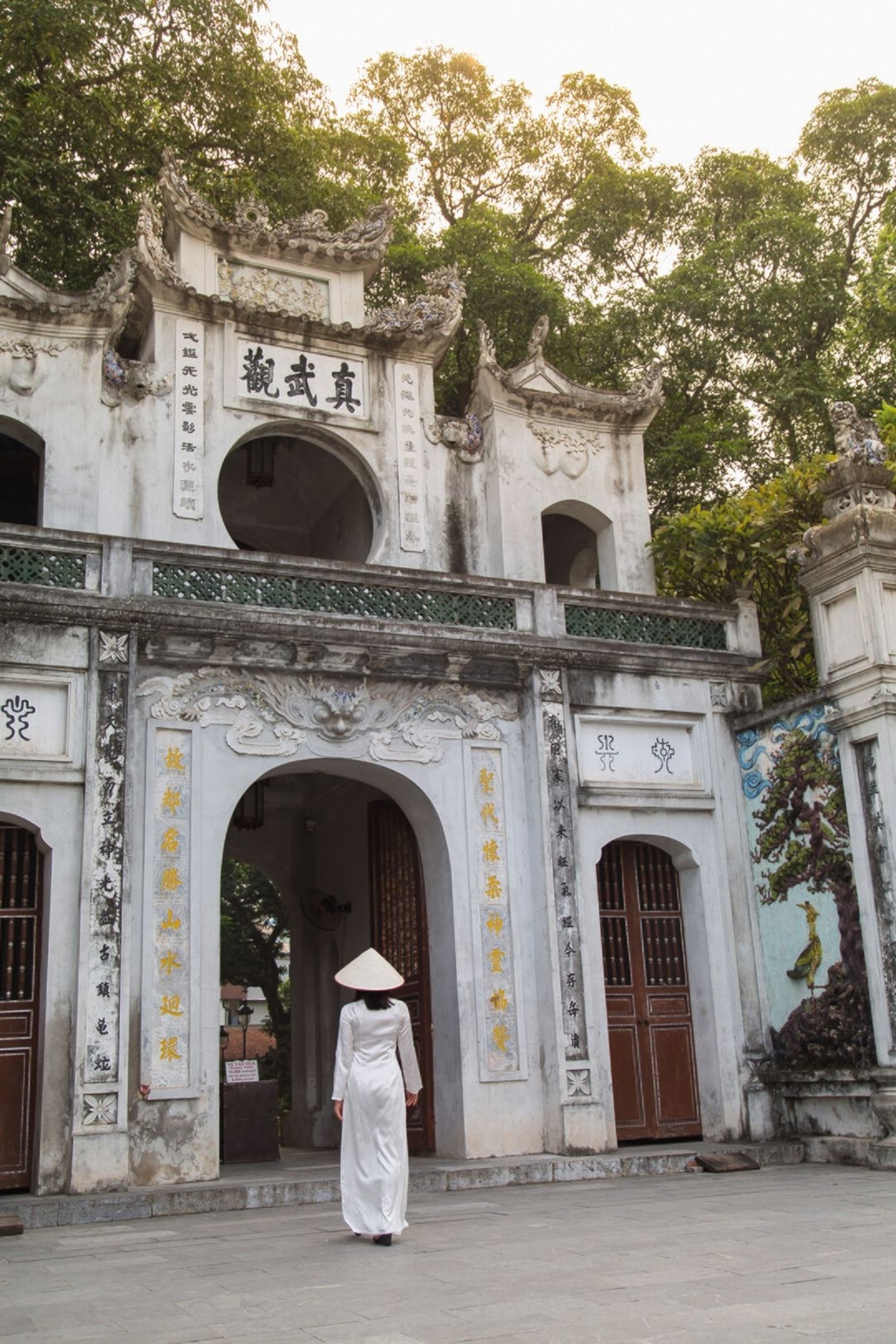
Like a local
West Lake: Join locals in their morning exercise along the shore of West Lake, Hanoi’s largest and oldest body of water sprawling north from the city centre. From sunrise, its shores play host to tai chi routines and gym sessions, plus the 11-mile round trip also passes several notable cultural landmarks, such as the Tran Quoc Pagoda.
Coffee Street: Coffee beans are grown in the central highlands of Vietnam, their distinct nutty flavour far surpassing brews served up in the rest of Asia — at least in the eyes of locals. Grab a cup in Coffee Street, a narrow alley in the Old Quarter whose shops are devoted to all things caffeine. Tho Cafe, housed in a French villa with marble columns and vaulted ceilings, is a particularly striking venue.
Hanoi Botanical Garden: A deep reverence for nature underpins Vietnamese society, evident in plant-filled homes, tree-lined streets and perfectly manicured parks. Head to Hanoi Botanical Garden, the ‘green lung’ of the city, set in the Ba Dinh district, to stroll among orchids, palms and sculptures. Don’t leave without visiting the central temple, where Vietnam’s three dominant religions are evident in the Buddhist, Taoist and Confucianist shrines.

Sleep
Flower Garden Hotel: This hotel is relaxed, clean and comfortable, and just a 10-minute walk from the Old Quarter. The highlight is the 14th floor, where views from the bar stretch right out across the city: you’ll be able to spot Long Bien Bridge as well as Tran Quoc Pagoda, blooming like a red lotus
in the centre of West Lake.
Hotel de l’Opera: Occupying prime real estate among the neoclassical mansions of Hanoi’s French Quarter, Hotel de L’Opera’s rooms are lavish, with velvet chairs, gilded mirrors, plush beds and high-end toiletries. The hotel takes its name from the magnificent, century-old Hanoi Opera House, which is just a short walk away and still stages performances today.
Intercontinental Westlake: Built out onto West Lake, InterContinental’s setting is spectacular. Wander pathways winding across the water or take a dip in the outdoor pool fringed with ficus trees. A 15-minute walk takes you to Hanoi’s Flower Market, where blooms are displayed across hundreds of stalls. Set your alarm for dawn to enjoy the early morning spectacle, then head back to the hotel to sample the impressively varied breakfast buffet.
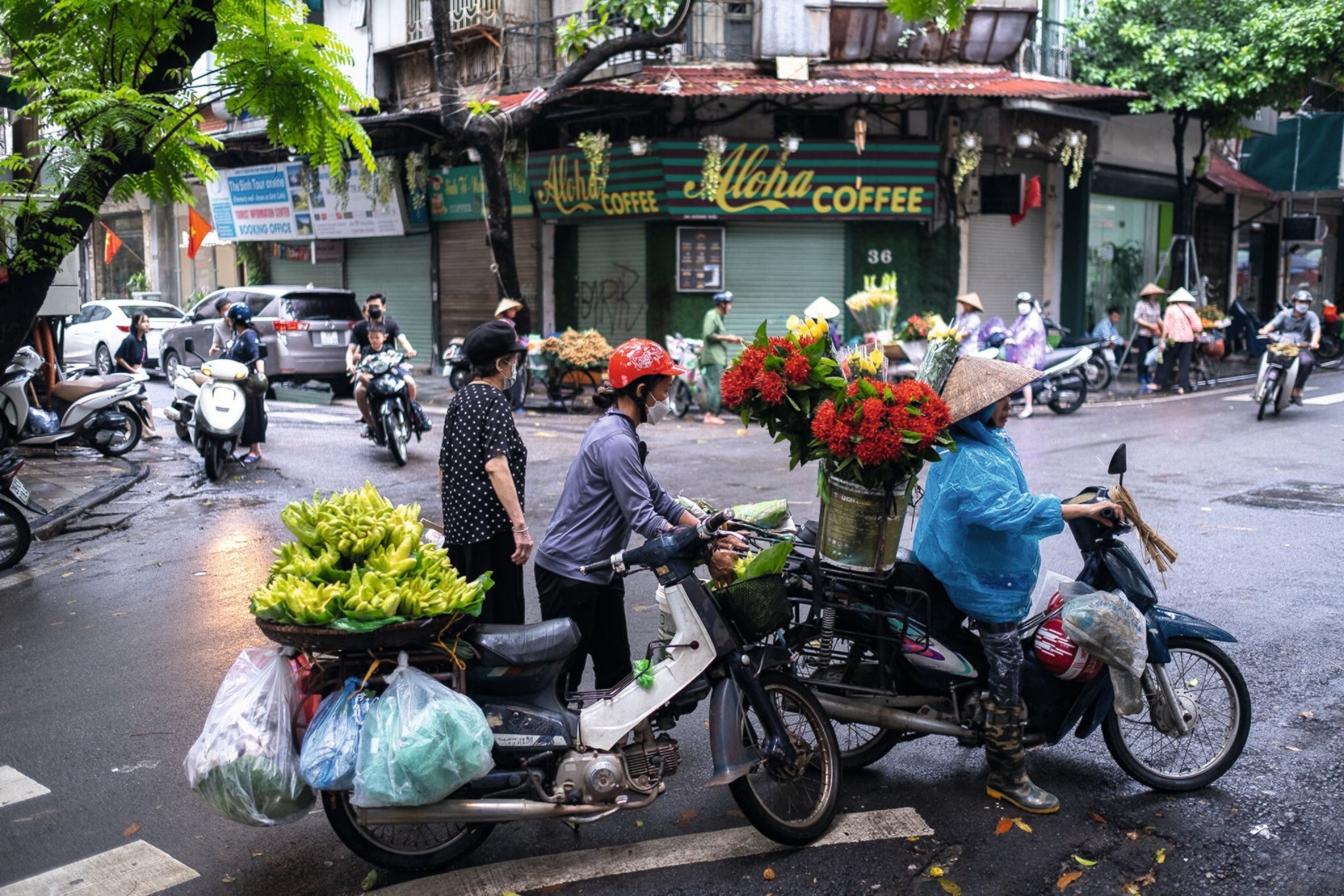
Getting there & around
Vietnam Airlines offers nonstop flights from Heathrow to Hanoi three times a week and indirect options daily. Other airlines offering one-stop services include Emirates, British Airways and Qatar Airways.
Average flight time: 12hrs
Once you’re in the city itself, rickshaws are plentiful and cheap, as are taxis. If you download one app before you go, make sure it’s Grab. Vietnam’s version of Uber is cheap, reliable and easy to use.
Alternatively, hire a bicycle from any one of the numerous operators to see the city at an even more leisurely pace. Hanoi Bicycle Rental is one option that’s centrally located and reliable.
When to go
The best time to visit is from November to April when Hanoi is dry and pleasant, with temperatures averaging 25C. Summer sees humid highs of over 30C with heavy rainfall, but this does make Hanoi’s greenery and surrounding rice paddies particularly striking.
More info
Vietnam Travel.
Hanoi Tourism.
How to do it
Asia travel specialists InsideAsia Tours offers a 13-night ‘Vietnam’s greatest hits’ itinerary from £1,889 per person, which includes all accommodation, including a stay in Hanoi and a cruise on Ha Long Bay’s neighbouring Lan Ha Bay, transfers and internal travel, some private guiding and a range of cultural experiences. Excludes international flights.
Vietnam Airlines flies directly and indirectly to Hanoi from Heathrow, starting from £675 return.
Published in the December 2022 issue of National Geographic Traveller (UK)
Follow us on social media
Twitter | Facebook | Instagram

